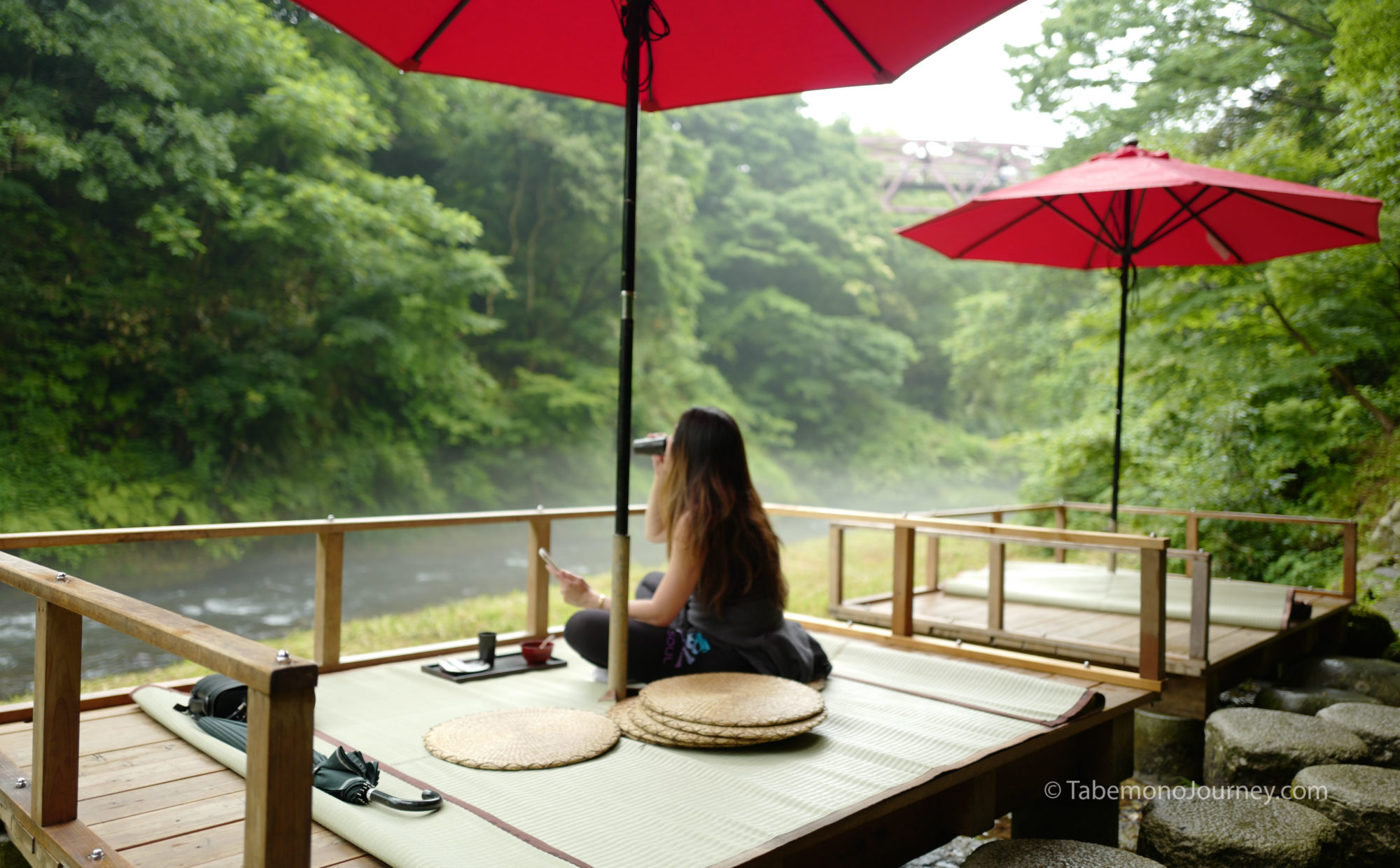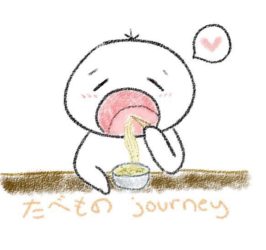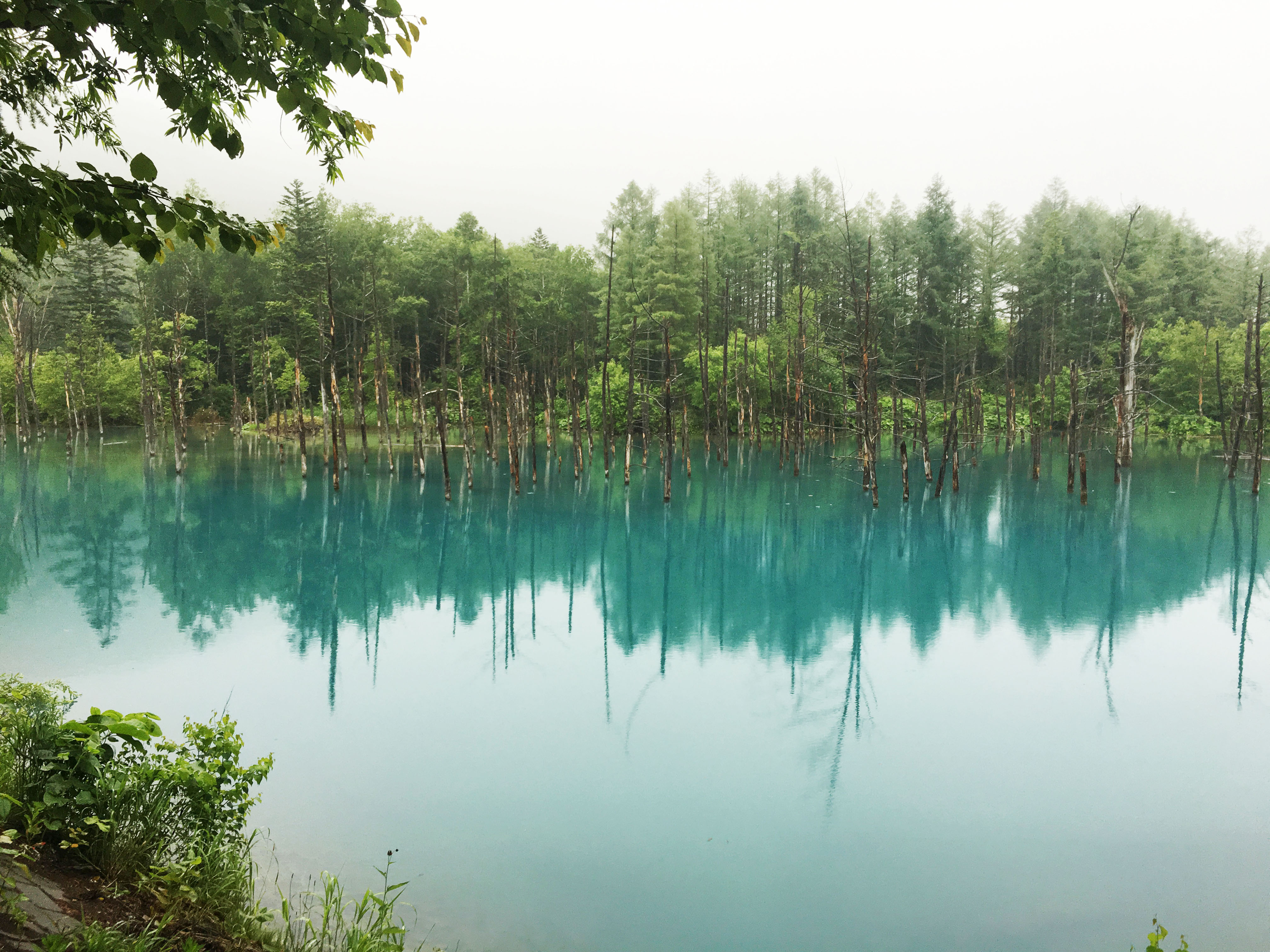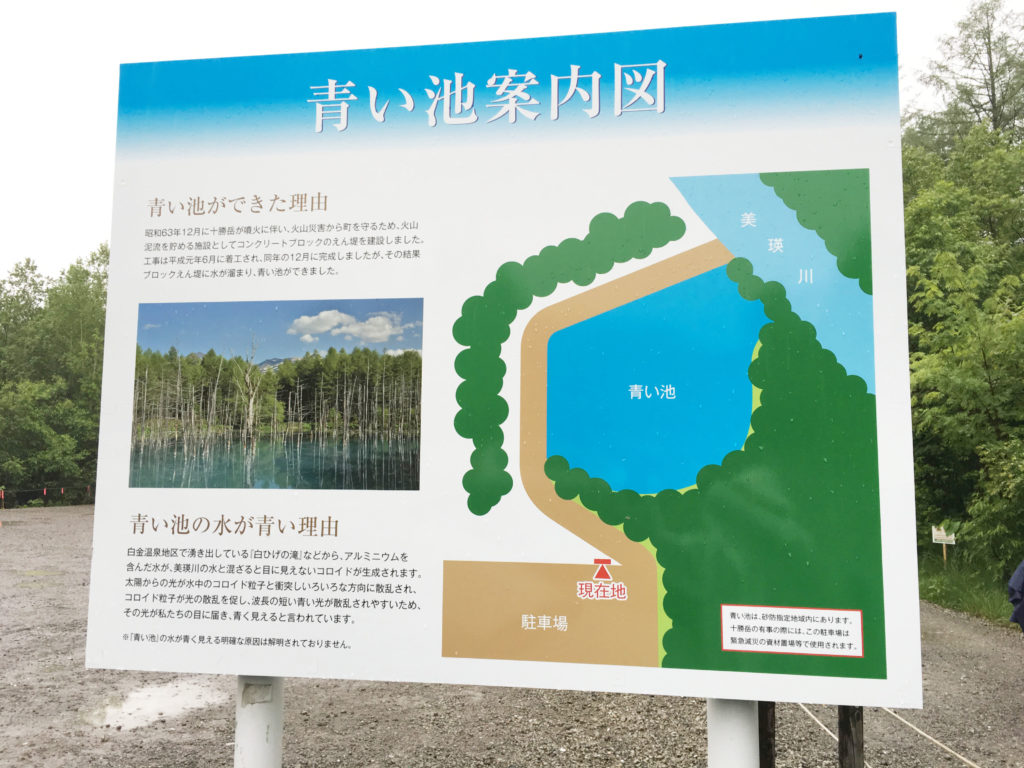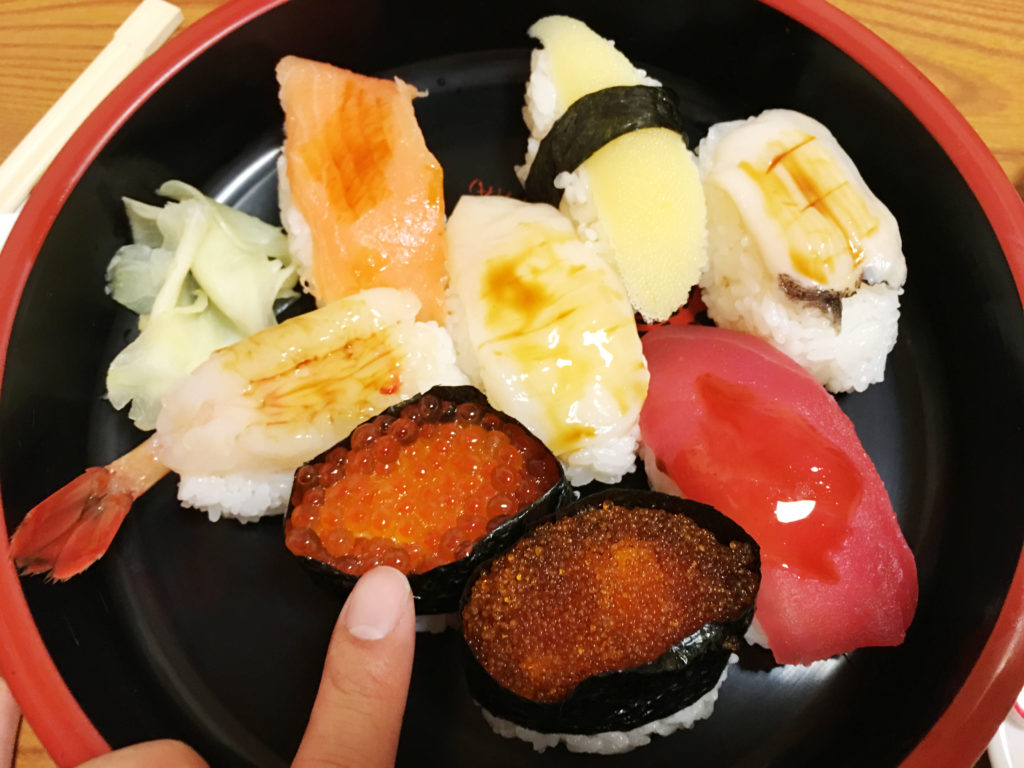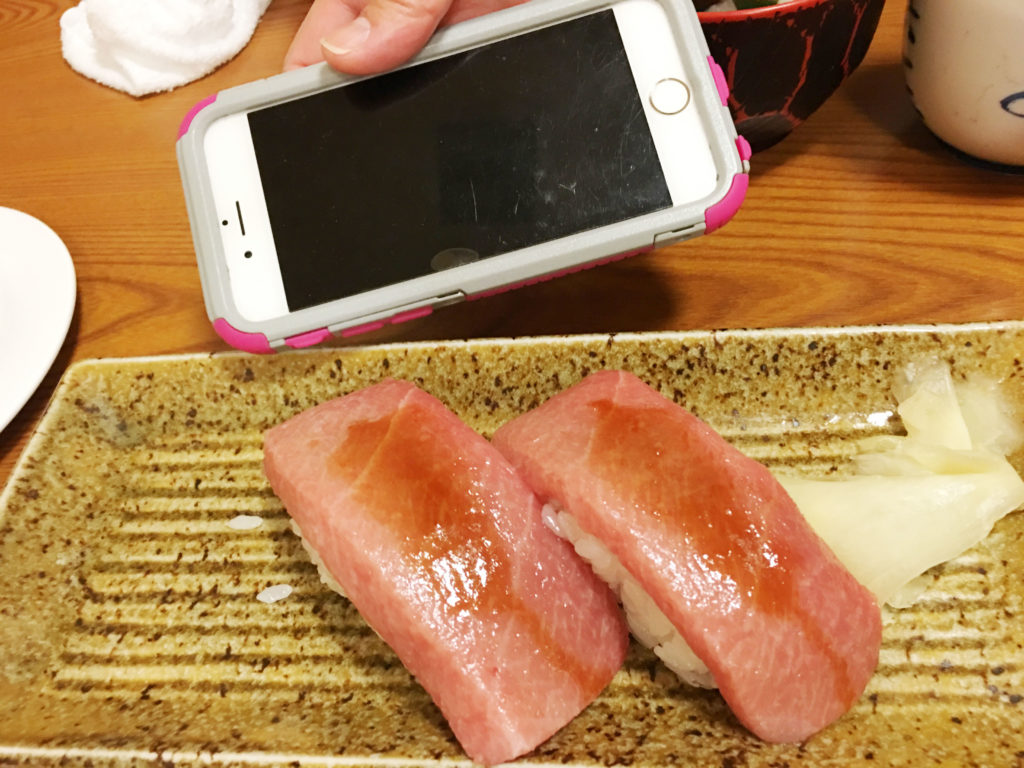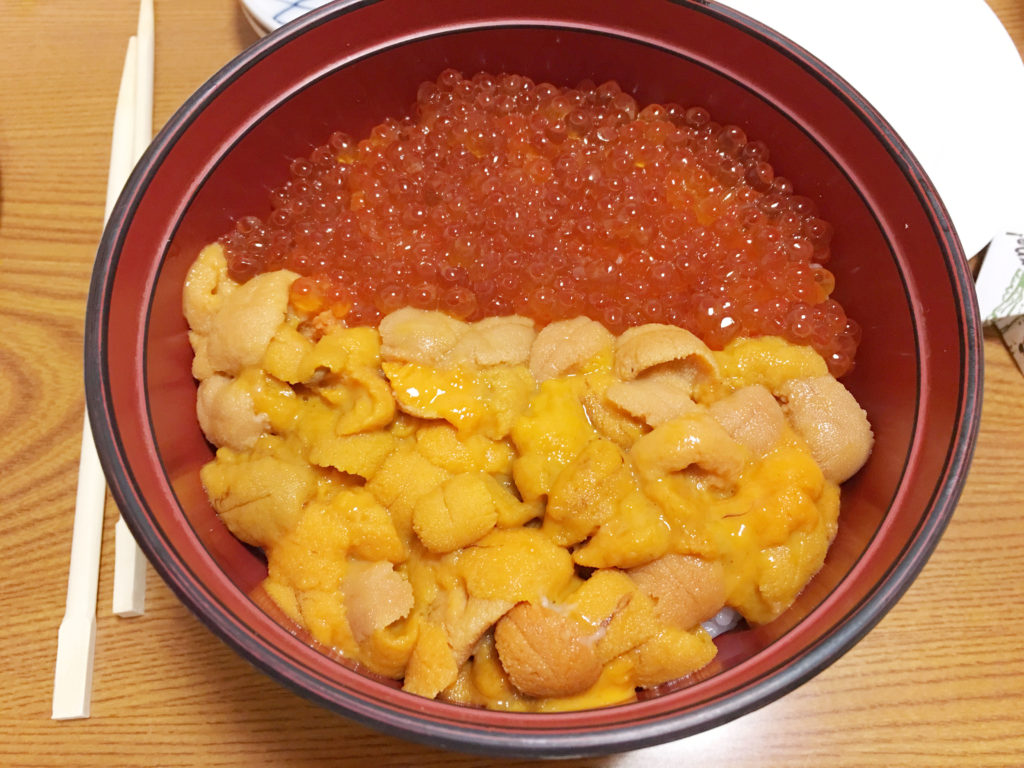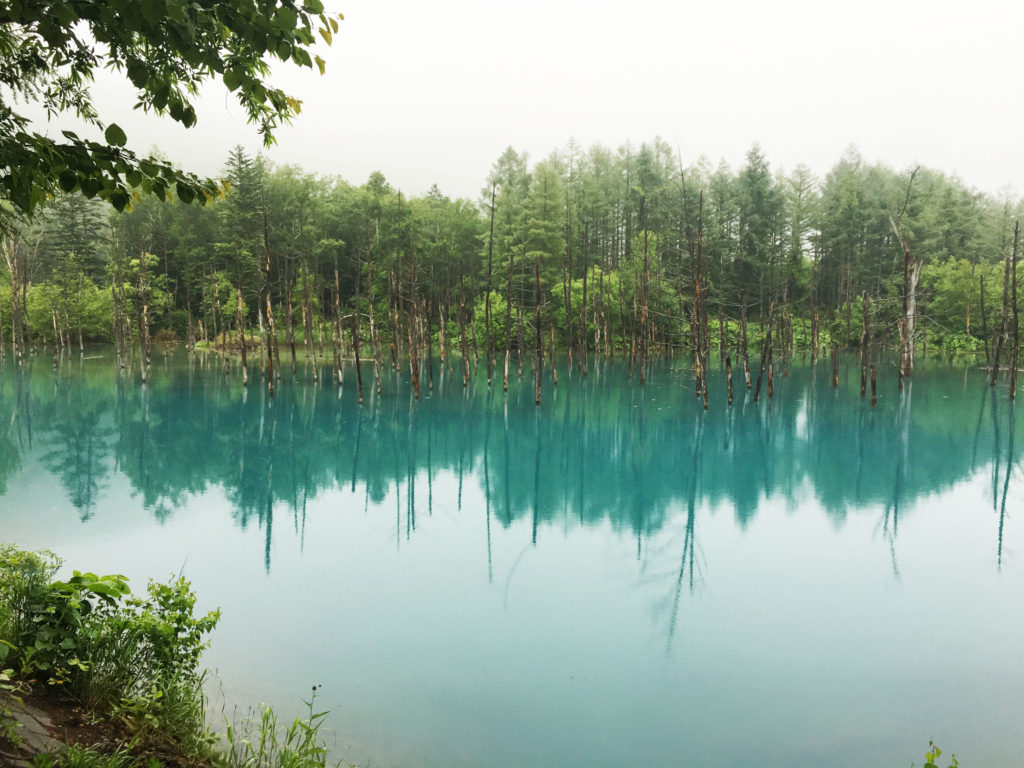
Continued from post here and you can read of the start of the journey here.
From the Trick Art Museum to Biei, it was a 20 minute drive north. Biei has many scenic attractions that are highlighted in the short summer months. Two of which, the Patchwork Road and Panorama Road, we previously driven through on our Day 4 drive from Asahikawa to Furano. Both areas have impressive scenic rural landscapes with vast pastures of green fields and solitary trees that proudly stood out in the vast landscape. Additionally the long stretches of road and flower fields were a joy to witness and drive through. However, due to the rain, we decided to skip going back as it is probably more enjoyable of an experience by bicycle and foot, and a good reason to come back in the future. Instead we focused on some of the other attractions of Biei, such as the Blue Pond and Shiragure Falls to wrap up the day.
Located in Mount Tokachidake, the Blue Pond is not a natural phenomenon, but is man-made. It was only recently a recognized tourist spot, popularized by the OS X “Mountain Lion” wall-paper. The pond is part of an erosion control system that was built to prevent damage to the town of Biei in case of volcanic mudflows caused by an eruption by Mt Tokachidake. The blue color is thought to be due minerals in the pond. Either way, the Blue Pond gives a surreal sense, with the skeletal structure of the dead trees “frozen” in time.
The freedom of having a car in Hokkaido means that we can go later in the afternoon, avoiding the tour buses and thus the crowds. We had the lake pretty much to ourselves. It was a 5 minute hike from the parking lot to the pond and despite the rain was worth seeing. When we arrived, the water was blueish green as the color of the water changes depending on the angle you are viewing the lake as well as the weather and forecast.

After viewing the lake, we decided to also visit Shirahige Falls as it is an additional 6 minute drive further up the mountain from the Blue Pond.

We parked nearby and walked to a convenient bridge in between two hotels that allow for an amazing view of the waterfall. Even despite the heavy falls of the water, the river that catches the waterfall is extremely clear and breathtaking.
After a full day of sight-seeing which included farms, flower fields, museums, and our children were feeling hungry and in asking them what they like to eat, the consensus was sushi. We choose a nearby sushi-ya called Fukuzushi as it was near where we were spending the night.
Fukuzushi’s focus is on big portions of fish and rice, pretty much in the size of sushi prepared during the Edo period (which is much bigger than today’s standard sushi size). Otherwise, it is your typically sushi eatery, where it’s not fancy but highlights the bounty of the local seas.
Big pieces of o-toro, here you can see that two piece already matches the size of an iPhone 6.
Most of us ordered the uni and ikura don. In Hokkaido, the uni is amazing, as it’s both briny and sweet. This will be one of our many uni and ikura tasting during our 9 day stay throughout Hokkaido.
Kinki no Hikari was the other highlight here where the Kinki (deep-sea perch) is first butterflied and then air-dried. Similar to the hokke we had the other night at Kumagera, this preparation concentrates the fatness and enhances the flavor of this oily fish. I enjoyed this version even more than the hokke. The broiling technique even allows you eat part of the bones.
After dinner we went back to Chalet Fuyuri to rest up for the night and the next day, we would wrap up our trip in Furano and Biei. When we woke up, we had an amazing view of the small town in clear skies from our balcony and saw the last of the rain. To be continued…

